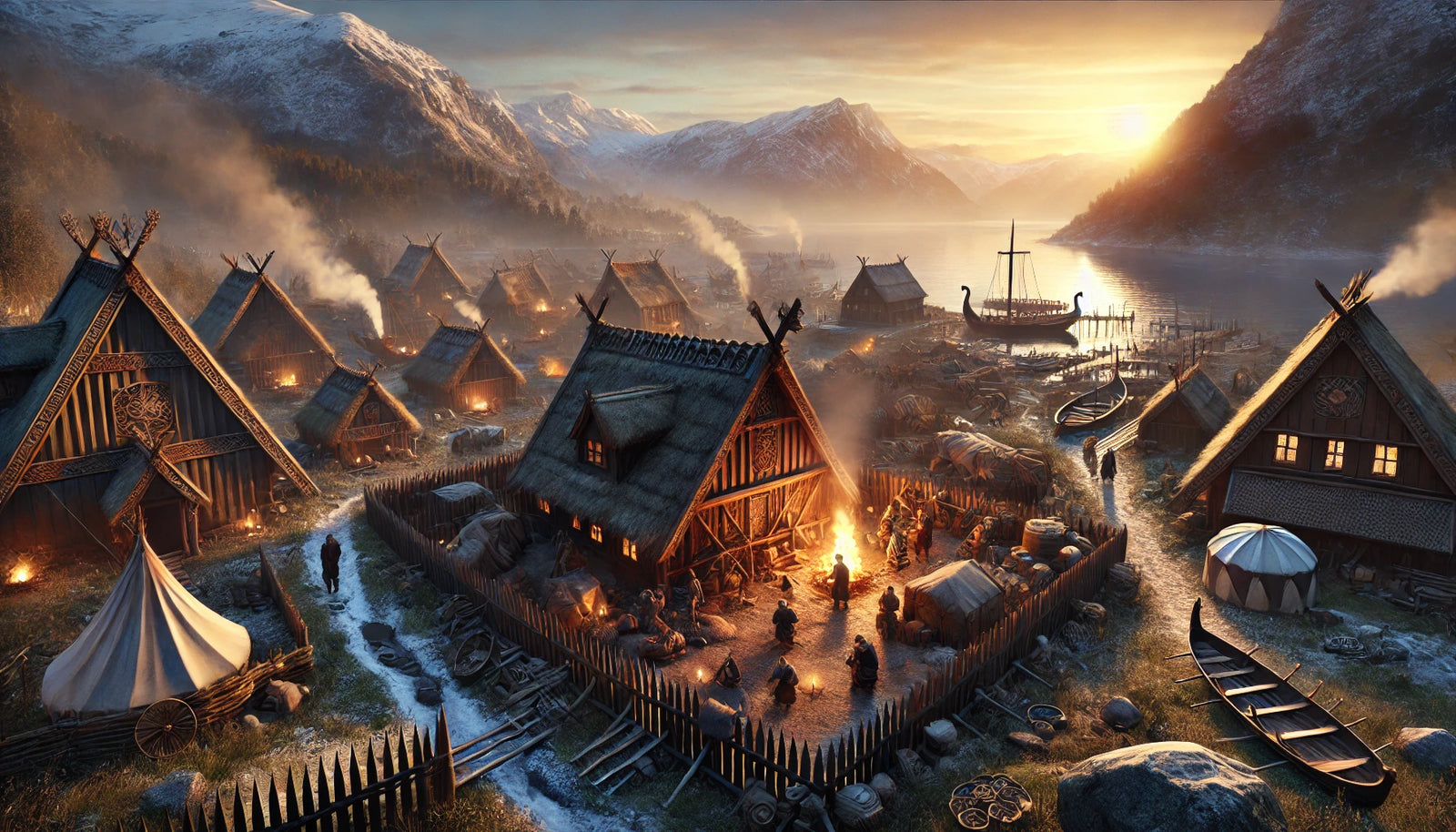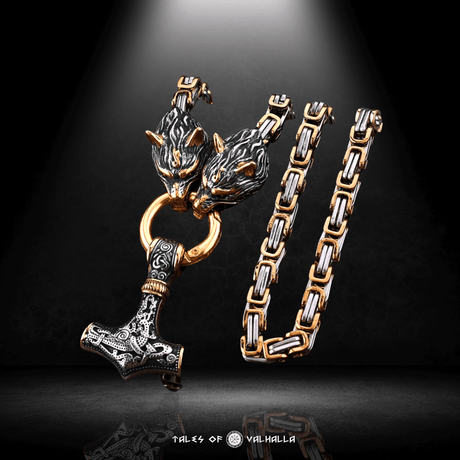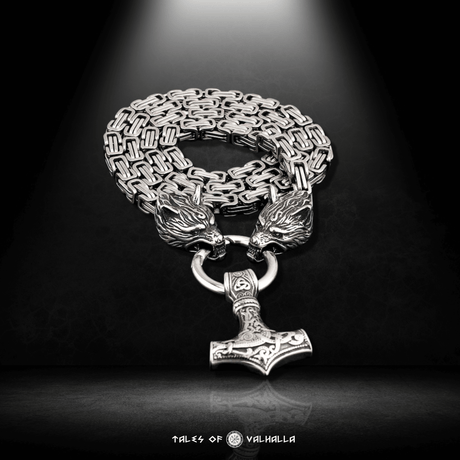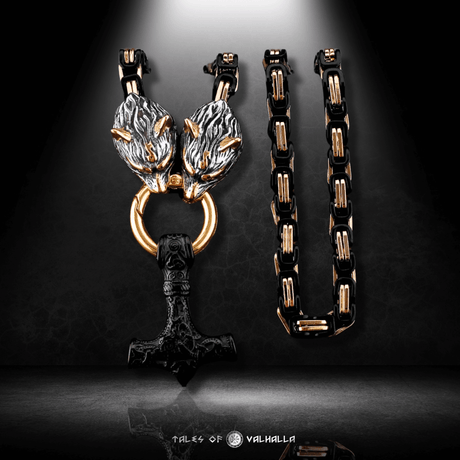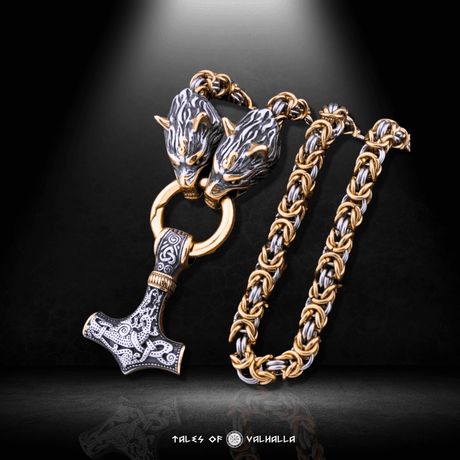Norway, with its rugged landscapes and deep fjords, is a land steeped in Viking history. Among the most fascinating aspects of this history are the Viking villages that once dotted the landscape. These villages were not just places of residence but were vibrant centers of Norse culture, economy, and religion. Today, they offer a glimpse into the daily lives of the Vikings, revealing the intricacies of a society that was as complex as it was fierce. In this blog, we'll explore the historical significance of Viking villages in Norway, delve into daily life within these communities, and examine their lasting legacy in modern times.
The Historical Significance of Viking Villages in Norway

The Historical Significance of Viking Villages in Norway
Origins and Development of Viking Settlements
Viking villages in Norway originated from small farming communities, evolving into bustling settlements as the Viking Age progressed. These villages were strategically located, often near coastlines, rivers, or fjords, which were essential for trade and transportation. The geography of Norway, with its harsh winters and mountainous terrain, played a significant role in shaping the development of these settlements. Villages were typically established in areas that offered natural protection and access to fertile land, ensuring the survival and prosperity of the community.
As the Viking Age progressed, these villages grew in size and complexity. They became hubs of trade and commerce, connecting the Norse people with other regions in Scandinavia and beyond. The development of Viking villages was closely linked to the expansion of Viking influence across Europe, as these settlements provided the necessary infrastructure for launching raids, conducting trade, and establishing colonies.
The strategic importance of these villages cannot be overstated. They served as the foundation of Viking society, where agriculture, craftsmanship, and commerce flourished. The growth of these settlements reflected the increasing sophistication of Viking society, as well as its ability to adapt to changing circumstances and opportunities.
The Structure and Layout of Viking Villages
The layout of a typical Viking village was designed to accommodate both the practical needs of daily life and the defensive requirements of a society often engaged in conflict. At the center of the village was the longhouse, a large, communal building that served as the home for an extended family or a chieftain's household. These longhouses were constructed from wood, with thatched or turf roofs, and were often divided into sections for different purposes, such as sleeping, cooking, and storage.
Surrounding the longhouse were smaller outbuildings used for various functions, including workshops, storerooms, and barns. The placement of these buildings was carefully planned to optimize the use of space and resources while also providing a measure of protection from the elements and potential attackers. In some larger villages, there might also be a smithy, a communal hall, or a temple dedicated to the Norse gods.
The defensive structures of Viking villages were equally important. Many villages were surrounded by wooden palisades or earthworks to protect against raids from rival clans or foreign invaders. The layout of the village often included narrow pathways and hidden entrances to confuse and deter attackers. This emphasis on defense reflects the volatile nature of the Viking Age, where conflicts and raids were a constant threat.
The structure and layout of Viking villages were a testament to the resourcefulness and adaptability of the Norse people. These communities were designed to be self-sufficient, resilient, and capable of withstanding the challenges of both nature and warfare.
Daily Life in a Viking Village

Daily Life in a Viking Village
The Role of the Family in Viking Society
In Viking society, the family was the cornerstone of the community. Family units in Viking villages were typically large, often including not just the nuclear family but also extended relatives, servants, and sometimes even slaves. The family worked together to ensure the survival and prosperity of the household, with each member playing a specific role in maintaining the village's economy and social structure.
Men were primarily responsible for activities such as farming, hunting, and fishing, as well as participating in raids and trade expeditions. Women, on the other hand, managed the household, which included food preparation, textile production, and child-rearing. Women also had significant authority within the home and were often responsible for managing the family's finances and property in the absence of their husbands.
Children in Viking villages were expected to contribute to the household from a young age, learning the skills necessary to take on adult responsibilities. Boys were trained in farming, hunting, and combat, while girls learned domestic skills such as weaving, cooking, and managing a household. The strong emphasis on family and kinship ties was reflected in the social and legal systems of Viking society, where family honor and loyalty were of paramount importance.
The role of the family in Viking society was not just about survival but also about preserving cultural traditions and values. The family was the primary unit through which the customs, beliefs, and skills of the Norse people were passed down from one generation to the next.
Agriculture and Food Production
 Viking Agriculture and Food Production
Viking Agriculture and Food Production
Agriculture was the backbone of Viking village life, providing the essential food and resources needed for survival. The harsh climate and challenging terrain of Norway meant that farming required careful planning and hard work. Viking farmers grew a variety of crops, including barley, oats, and rye, which were staples of the Norse diet. These grains were used to make bread, porridge, and ale, all of which were vital for sustaining the community.
In addition to crop farming, animal husbandry was an important part of Viking agriculture. Villagers raised livestock such as cattle, sheep, goats, and pigs, which provided meat, milk, wool, and leather. Horses were also kept for transportation and farming work. The management of livestock was a communal effort, with villagers often sharing resources such as pastures and barns.
The production and preservation of food were crucial for surviving the long Norwegian winters. Villagers practiced various methods of food preservation, including smoking, drying, and fermenting, to ensure a steady supply of food throughout the year. Communal activities, such as hunting and fishing, also played a role in supplementing the village's food supply.
Agriculture and food production in Viking villages were not just about sustenance but also about social cohesion. The sharing of resources and the collective effort required to farm and manage livestock helped to strengthen the bonds between villagers, fostering a sense of community and mutual support.
Trade and Economy in Viking Villages
Trade was a vital aspect of the economy in Viking villages, connecting these communities to a broader network of exchange that spanned Europe and beyond. Viking traders were known for their skill in navigating long distances by sea, reaching as far as the British Isles, the Mediterranean, and even the Middle East. The goods traded included furs, textiles, weapons, and jewelry, as well as slaves captured during raids.
The economic activities of Viking villages were closely tied to their geographic location. Villages near the coast or along major rivers were particularly well-positioned to engage in trade, both with other Norse settlements and with foreign merchants. These villages often served as ports or trading hubs, where goods from different regions were exchanged and redistributed.
The wealth generated by trade contributed to the prosperity of Viking villages, allowing them to grow and develop. It also enabled the accumulation of resources necessary for warfare and expansion, furthering the reach of Viking influence. The economic success of these villages was not only a testament to the entrepreneurial spirit of the Vikings but also a reflection of their ability to adapt and thrive in a rapidly changing world.
The Cultural and Religious Life of Viking Villages

The Cultural and Religious Life of Viking Villages
Religious Practices and Sacred Spaces
Religion played a central role in the daily life of Viking villages, influencing everything from social customs to agricultural practices. The Vikings were polytheistic, worshipping a pantheon of gods and goddesses who were believed to control various aspects of the natural world. These deities, such as Odin, Thor, and Freyja, were honored through rituals, sacrifices, and festivals held throughout the year.
In Viking villages, religious practices were often centered around sacred spaces, which could include temples, shrines, or outdoor altars. These spaces were used for communal worship, where villagers gathered to offer prayers and sacrifices to the gods. The most significant religious ceremonies were often tied to the agricultural calendar, marking important events such as planting, harvest, and the changing of seasons.
One of the key religious practices in Viking villages was seidr, a form of Norse magic associated with prophecy and communication with the spiritual realm. Practiced primarily by women, known as volvas, seidr was an important aspect of Viking spirituality, offering guidance and insight into the future.
The integration of religion into daily life in Viking villages helped to reinforce social bonds and provide a sense of order and meaning in a world that was often harsh and unpredictable. The rituals and beliefs of the Vikings were not just a reflection of their spiritual values but also a means of maintaining harmony within the community.
Social Structure and Leadership
The social structure of Viking villages was hierarchical, with a clear division of roles and responsibilities based on status and wealth. At the top of the social hierarchy were the chieftains, who were the leaders of the village and wielded considerable power and influence. Chieftains were responsible for making important decisions, leading the community in times of conflict, and overseeing the distribution of resources.
Below the chieftains were the free men, who owned land and had the right to participate in the village assembly, known as the Thing. The Thing was a key institution in Viking society, serving as both a legislative and judicial body where disputes were settled, and communal decisions were made. Participation in the Thing was a marker of social status and a means of asserting one's influence within the community.
At the bottom of the social hierarchy were the thralls, or slaves, who had no rights and were considered the property of their owners. Thralls were typically captured during raids or purchased through trade and were used for various forms of labor within the village.
The social structure of Viking villages was not rigid, and there was some degree of social mobility. Wealth and success in trade or warfare could elevate an individual's status, while failure or misfortune could lead to a decline in standing. This fluidity within the social hierarchy reflected the dynamic and competitive nature of Viking society.
The Legacy of Viking Villages in Modern Norway

The Legacy of Viking Villages in Modern Norway
Preservation and Reconstruction of Viking Villages
Today, the legacy of Viking villages in Norway is preserved through various archaeological sites and reconstructed villages that offer a glimpse into the past. These sites, such as the Lofoten Viking Museum and the Viking Valley in Gudvangen, have become popular tourist attractions, drawing visitors from around the world who are eager to experience Viking history firsthand.
The reconstruction of Viking villages is based on extensive archaeological research, which has provided valuable insights into the layout, architecture, and daily life of these communities. These reconstructed villages often include replicas of longhouses, workshops, and temples, as well as displays of artifacts and tools used by the Vikings. Visitors can participate in interactive experiences, such as traditional crafts, archery, and storytelling, which bring the history and culture of the Vikings to life.
The preservation of Viking villages is not just about historical accuracy but also about keeping the cultural heritage of Norway alive. These sites serve as educational resources, helping to foster a deeper understanding of Viking history and its impact on modern Norwegian identity. They also provide a platform for celebrating the achievements and contributions of the Norse people, whose legacy continues to shape the cultural landscape of Norway.
Viking Villages in Popular Culture and Media
The fascination with Viking history has extended into popular culture, where Viking villages are often depicted in films, television series, and commercials. These portrayals have played a significant role in shaping modern perceptions of Viking life, although they are sometimes more myth than reality.
One notable example of Viking villages in popular culture is the television series "Vikings," which has brought the world of the Norse people to a global audience. The show's depiction of Viking villages, with their dramatic landscapes and intricate social dynamics, has captivated viewers and sparked a renewed interest in Viking history. However, while the series draws on historical elements, it also takes creative liberties, blending fact with fiction.
Viking villages have also appeared in various commercials, often as symbols of strength, tradition, and adventure. These portrayals tap into the enduring appeal of the Viking mystique, presenting an idealized version of Viking life that resonates with contemporary audiences.
While popular culture may not always provide an accurate representation of Viking villages, it has undoubtedly contributed to the growing interest in Viking heritage. By bringing the world of the Vikings to life, these depictions encourage people to explore the real history behind the legends and discover the rich cultural legacy of the Norse people.
Conclusion
Viking villages in Norway were the heart of Norse society, serving as centers of culture, economy, and community. These settlements were more than just places of residence; they were vibrant, dynamic communities that played a crucial role in the development of Viking civilization. From the structure and layout of the villages to the daily lives of their inhabitants, Viking villages offer valuable insights into the world of the Norse people.

